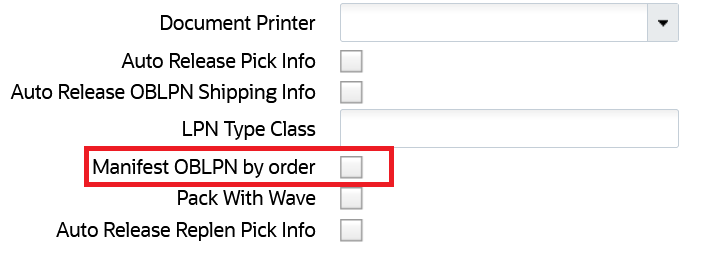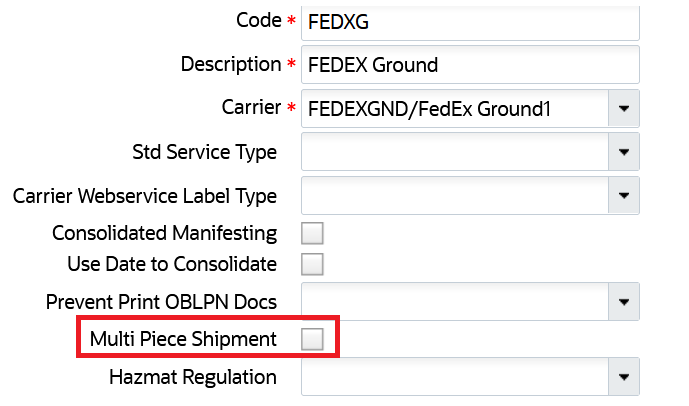FedEx Multi-Piece Shipment Configuration
FedEx supports the grouping of two or more packages during ship requests that are fetching a tracking number. In general, these packages must all use the same service and must all have the same destination, billing information, and accessorials. Multi-Piece Shipment (MPS) users gain added visibility into FedEx shipment tracking and may also be granted better rates for MPS. You should check with your FedEx representative to determine if MPS can be used.
For an MPS shipment, each OBLPN still requires it's own request to FedEx for a tracking number. MPS packages are tied together by a master tracking number. The master tracking number is the tracking number of the first OBLPN manifested in the group. It's tracking number is passed as the master tracking number is each subsequent OBLPN's ship request. Additional information such as the total number of pieces (X of Y) and total shipment weight is required for MPS. Different shipping scenarios such as Dry Ice or International MPS require even more shipment-level information in the request.
IMPORTANT: MPS also requires additional operational work as well as for exception scenarios. Because information pertaining to all OBLPN's in the group must be sent in each OBLPN's request, the final state must be available before any tracking numbers are fetched.
For example, assume a wave cubes an order into three OBLPNs and a FedEx MPS shipment is created and three tracking numbers are fetched. If during packing it is determined that the order requires four OBLPNs, then the entire MPS shipment must be voided (by voiding any of one of the tracking numbers) and all four OBLPNs re-manifested and new tracking numbers and labels obtained. If the MPS group changes, then all information must be updated to FedEx, which requires the fetching of new tracking numbers.
WMS allows MPS requests during a cubed wave. The wave must be cubed in order to complete MPS as the final OBLPNs must be available.
To configure MPS during a cubed wave, enable the following two flags:
- “Manifest OBLPN by order” in the Wave Template UI
After enabling the flag, the system looks up the Ship Via for the OBLPNS allocated by the configured wave. The wave proceeds with the multi piece shipment flow if the Ship Via is configured with the “Multi Piece Shipment” flag.

- “Multi Piece Shipment” flag in the Ship Via UI
After enabling the flag, the system will consider configuring the Ship Via for the MPS shipment.
When you enable the “Multi piece Shipment” and “Manifest OBLPN by order” flags, the system groups the OBLPNs by Order Number for the ship via (Multi piece Shipment flag enabled) selected by the wave for multi-piece manifest.

After running the wave, the system completes the manifestation process. At the end of the manifesting process, the master tracking number for all OBLPNs in the group will be updated with the master tracking number on the carrier LPN.
You can trigger an MPS request for all OBLPNs associated with an order on the Order Headers screen.
To manually trigger an MPS request, do the following:
- Go to the Order Headers screen.
- Select an order record.
- Click the “Manifest” button.
This manifests all OBLPNs for the selected order.
